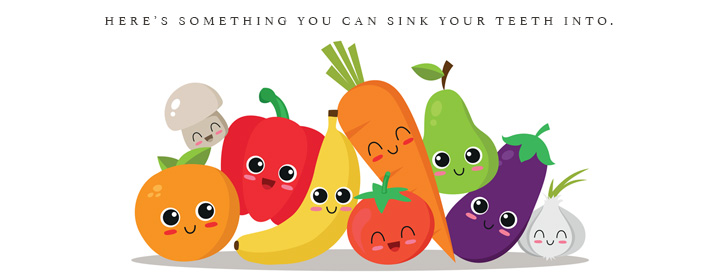The third sense we can use for a sensible look at healthy living is taste. I’ve been looking forward to sharing this sense with you, since it’s something I believe you can sink your teeth into. Discussing the sense of taste can be heavy on science or whimsically presented tongue-in-cheek.

There are five basic qualities of taste: sweet, bitter, sour, salty, and umami. I tend to have issues with all these, sometimes craving certain foods from each one of these qualities. Wait… What? You’ve never heard of umami? “Umami” in Japanese means “a pleasant savory or meaty taste.” It focuses on the taste of glutamate (glutamic acid), which is an amino acid in vegetables and animal proteins. Umami boosts the flavor of dishes.
I have a good “sense” of what foods are in the sweet, bitter, sour, and salty categories. However, I need to remind myself and sometimes get surprised by which foods are good sources of glutamates:
• Meat, especially cured or matured meat
• Seafood, including tuna, fish, mussels, oysters, scallops, and clams
• Aged cheese
• Seaweed
• Tomatoes
• Carrots
• Mushrooms
• Soy and its products, including tofu, edamame, and soy sauce
• Green tea
• Potatoes
• Chinese cabbage
Glutamates provide satisfaction and a feeling of wellness following a meal, as well as support a healthy gut, stimulate healthy digestion, and support normal brain processes.
The sense of taste has strong connections to emotions. Think of expressions such as “whispering sweet nothings,” “a bitter pill to swallow,” or “It’s just sour grapes.” Foods can be associated with pleasure or displeasure. These connections are hard-wired in our evolution. These taste qualities let us know what’s good or bad to consume — rich in nutrients or possibly poisonous. Various senses of taste may curb your appetite or stimulate it. Everything must balance.
I will and have been known to stop eating something or push a dish aside if the taste doesn’t meet my satisfaction, stating, “This isn’t worth the calories.”
The five basic tastes provide that balanced eating plan, which will allow all the good properties of the foods I consume to work in concert, providing a harmonious, healthy microbiome. Maybe there’s something to the saying “that nothing tastes as good as feeling healthy.” Now, that’s something I’ll sink my teeth into.

This is part 3 of the multipart series, “A SENSE-ble Look at Healthy Living.” In my next blog, we’ll look to the human sense of smell.
Missed the beginning of our journey through the human senses? Check out the rest of A SENSE-ble Look at Healthy Living.



Thank you Rick for this interesting article. Lots of great helpful information.